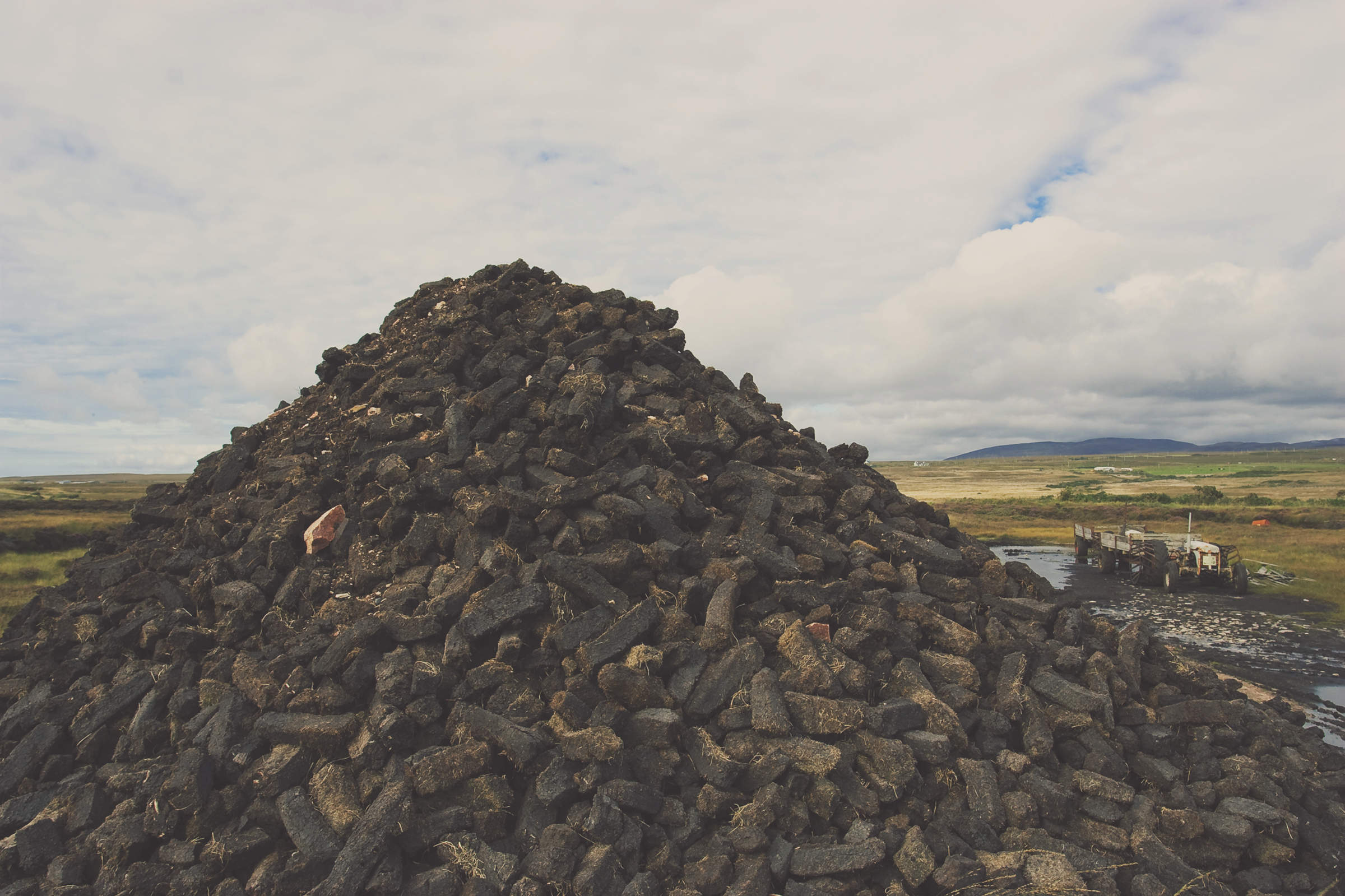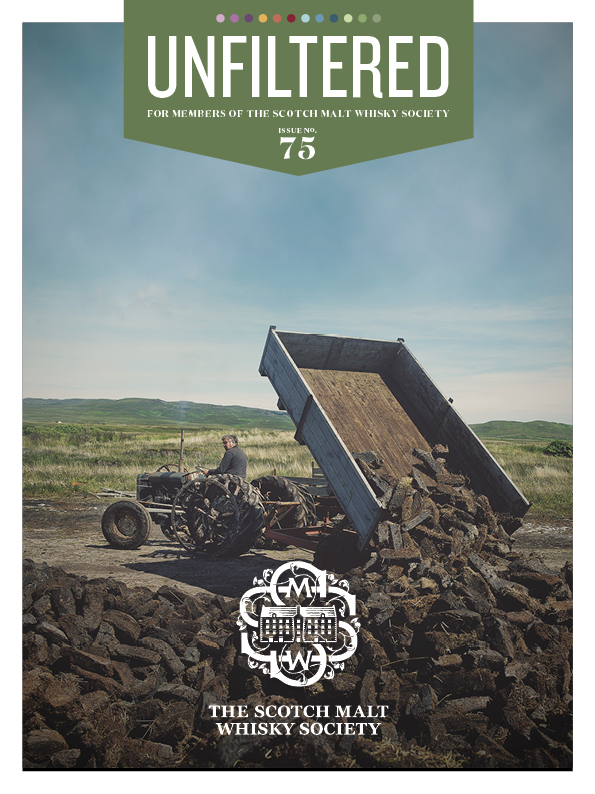Originally published in Unfiltered #75
Words: Gavin D Smith
Peat has been used as a fuel and fertiliser for arable land since prehistoric times in much of northern Europe. In 2015, the archaeology journal Antiquity reported on the discovery in 2002 of a ‘fossil’ peat stack dating to the second millennium BC on the Isle of Barra in the Outer Hebrides.
It stands to reason that early Scottish distillers in areas where peat was available would not only dig and dry it for domestic heating and cooking purposes but would also use it to fire their primitive stills. The term ‘peat reek’ was first used in 1824 to denote illicitly produced whisky, having been in use referring to pungent smoke from peat fires since the late 18th century.
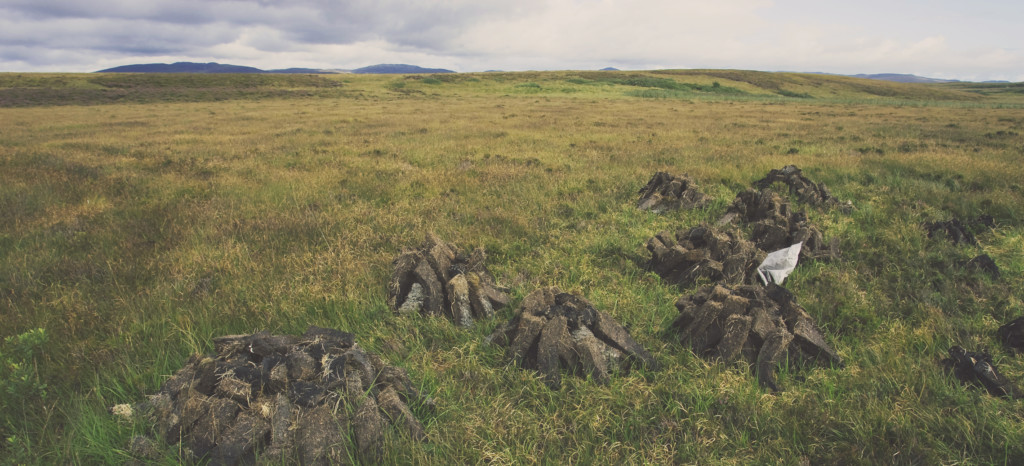
As distilling became more commercial and formalised, peat continued to be the fuel of choice for many legal distilleries. It was found in abundance across much of the Highlands and Islands and was free or subject to modest annual charges. When burnt in the kiln, it led to a smoky, ‘traditional’ style of whisky.
Distilleries based in the Scottish Lowlands tended to have relatively easy access to supplies of coal, and not much access to peat, which is one reason why the region produced quite light, non-smoky whiskies. Extension of the railway network north allowed distilleries in areas like Speyside to import coal and coke relatively easily and cheaply from the 1860s onwards.
A series of features based on visits to distilleries during the 1920s was published by the Wine and Spirit Trade Record between 1922 and 1929, and these essays have recently been collected in a fascinating volume titled The Distilleries of Great Britain and Ireland, published by James Eadie Ltd — which you’ll be able to read more about in next month’s issue of Unfiltered.
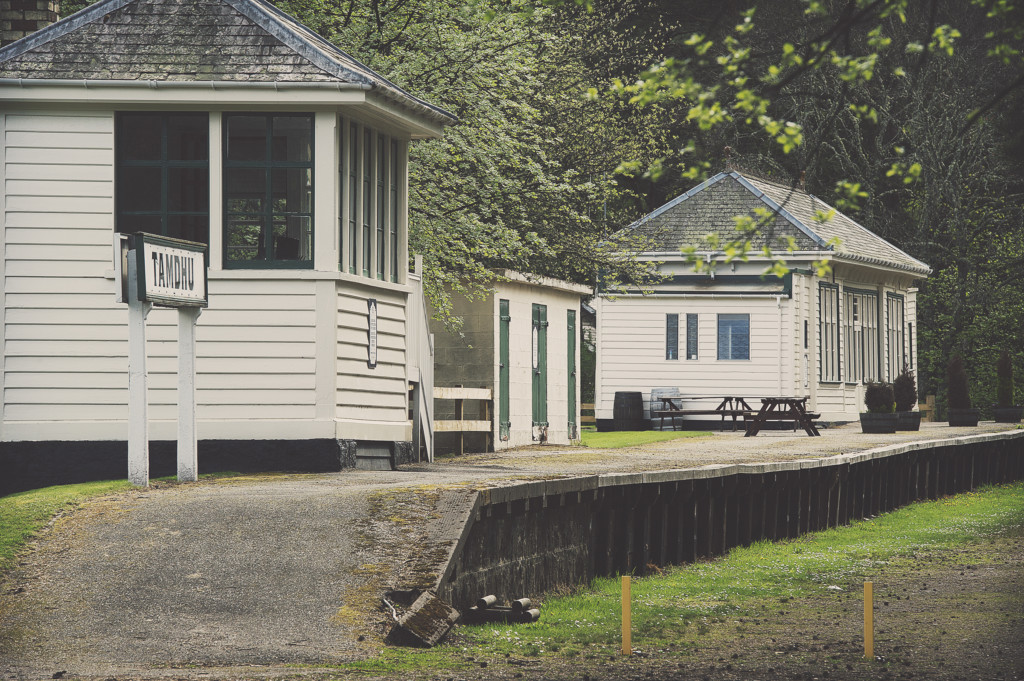
Tamdhu and the disused railway station that served it.
In the article devoted to Craigellachie, dated February 14, 1923, the distillery is described as “burning equal quantities of peat and coke”, with peat presumably being used principally for the flavour it imparted. A profile of nearby Aberlour, dated a month later, also includes the observation that “as at other distilleries in the neighbourhood, a mixture of peat and coke comprises the fuel.”
Islay distilleries such as Ardbeg, Laphroaig and Caol Ila are described in The Distilleries of Great Britain and Ireland as burning only peat in the kiln, and Highland Park is noted as drying its malt “exclusively with Orkney peat”.
The Kintyre peninsula around Campbeltown is rich in peat and local distilleries might have been expected to follow the examples of Islay and Orkney in an exclusive use of the fuel. But after a visit to Scotia distillery (now Glen Scotia) in the town on April 14, 1924 the anonymous <Wine and Spirit Trade Record> author wrote that “the fuel is peat, followed by coke”, while Springbank is noted as using “mainly peat”, and the large distillery of Hazelburn was burning peat and coke in 1922. It seems reasonable to speculate that the latter fuel was sourced from the nearby Drumlemble coal mine, which operated into the 1930s.

Glen Scotia in Campbeltown.
There are, of course, major differences between the composition of peat in coastal and inland areas, and these differences impact in a major way on the character of whisky malted using these peats. Peat found on Islay, for example, contains seaweed and other marine vegetation, creating iodine and saltiness in whisky, while Highland peat contains more plant-based matter, notably heather, leading to rich, earthy notes.
One of the most significant changes to Scotch whisky malting came with the gradual introduction of centralised, commercial maltings from the 1960s, replacing individual distillery floor maltings. The phenolic level (expressed in part per million, or PPM) could be quite precisely controlled in these facilities, compared to floor maltings, with distillers specifying the range of phenols required in their malt. However, many malt whisky distillers had already dialled down the peatiness of their whiskies to suit the lighter styles preferred by blenders.
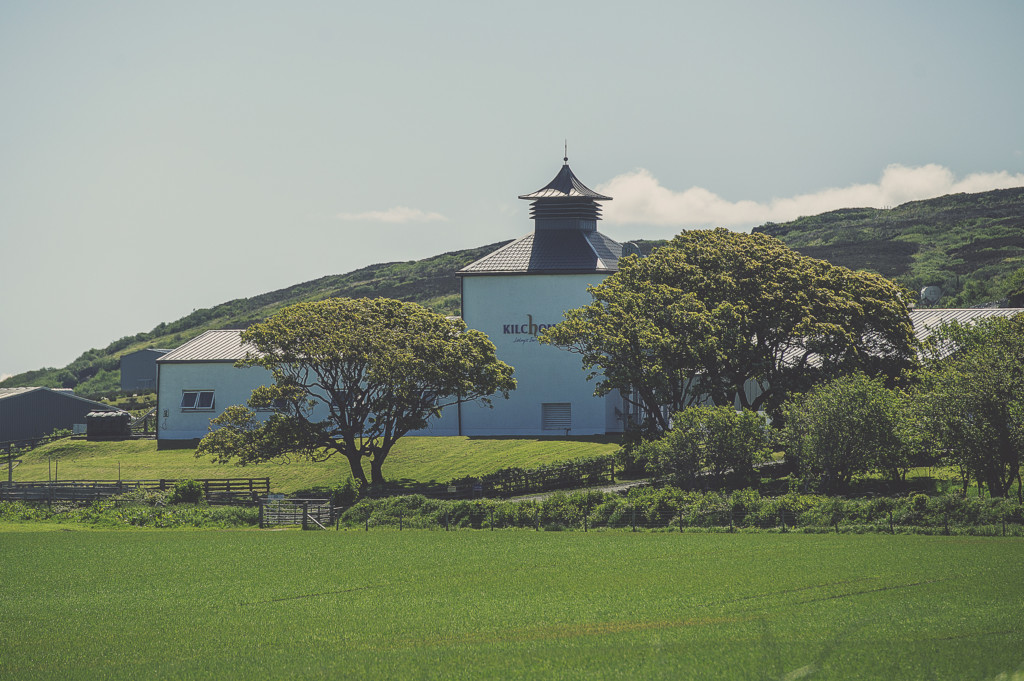
Kilchoman Distillery in Islay.
A little Islay whisky goes a long way in a blending vat, and bold peated malts fell decidedly out of favour with all but a faithful band of aficionados. How fashions change! We now find peaty whiskies being more desirable than ever before, with drinkers of Laphroaig, Ardbeg, Kilchoman, Port Charlotte et al, proudly referring to themselves as ‘peat-heads’ or ‘peat-freaks’.
However, therein lies a potential problem. Peatlands are a natural terrestrial carbon store, capturing more carbon than all other vegetation types in the world combined. That means peat is critical for preventing and mitigating the effects of global warming. Any form of peat harvesting that damages peatlands are a major source of greenhouse gas emissions, and in the 21st century the use of peat has been discouraged in an attempt to protect these valuable ecosystems.
The Scotch whisky industry has embraced ambitious environmental initiatives in recent years. A Scotch Whisky Association (SWA) spokesperson said: “We will extract peat responsibly and play an active role in conserving and restoring Scotland’s peatland by 2035. The industry uses a very small amount of peat from a handful of sites in Scotland, solely for giving the barley a distinctive smoky flavour profile during the malting process, which is then used in certain whiskies to provide a distinctive flavour profile.
“Of course, due to peat’s important role in natural carbon storage, water quality and supporting biodiversity, we are determined to play a key role in preserving and restoring this vital habitat. We will develop a Peat Action Plan outlining how our industry will deliver environmental net gain, and we will support the International Union for the Conservation of Nature (IUCN) UK Peatland Strategy 2040.”
Unfiltered Magazine is The Scotch Malt Whisky Society’s premium whisky knowledge magazine delivering quality content exclusively to members in an immersive multimedia format monthly. To view Unfiltered #75 in its entirety (as well as all back issues), log in and access the members’ portal or join The SMWS today — the world’s most colourful whisky club.



